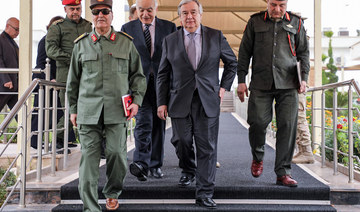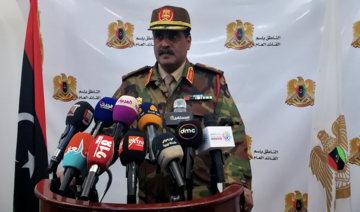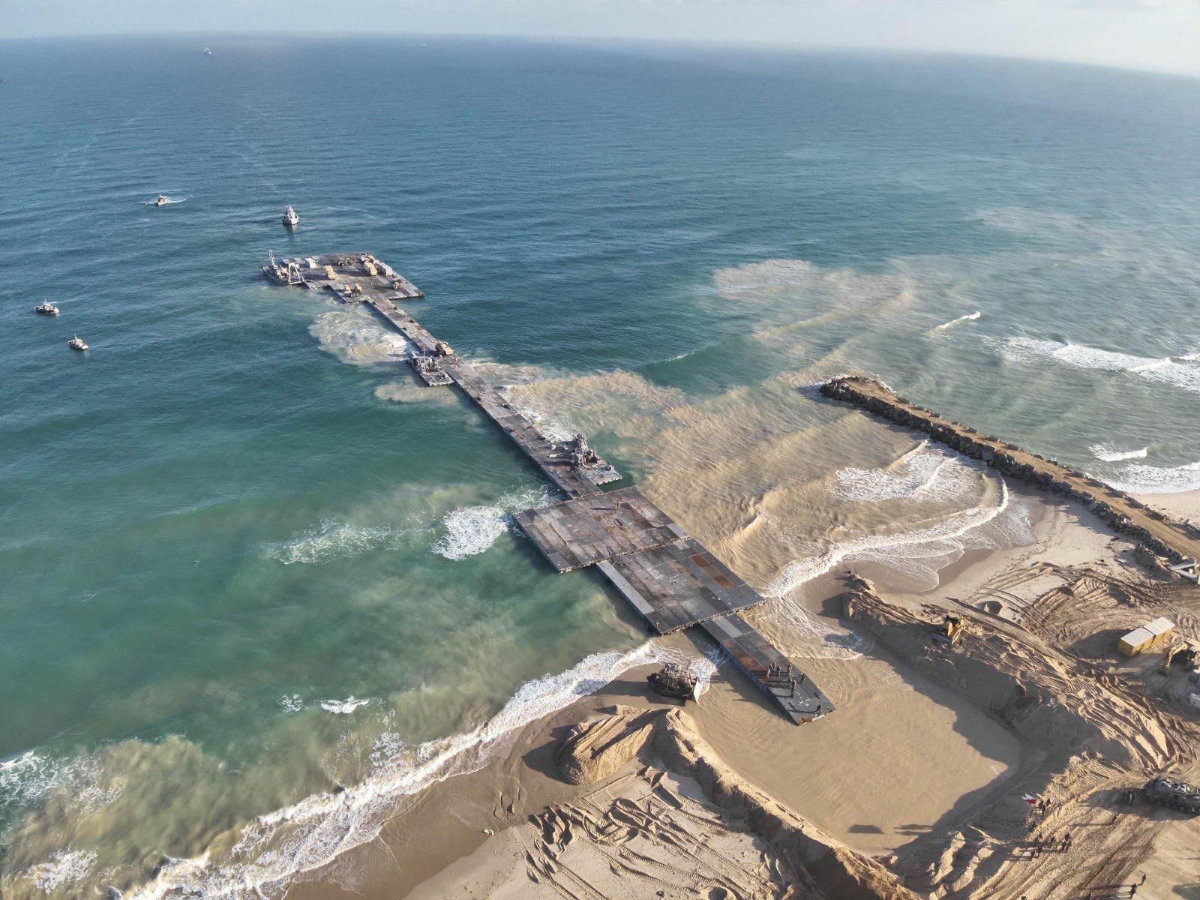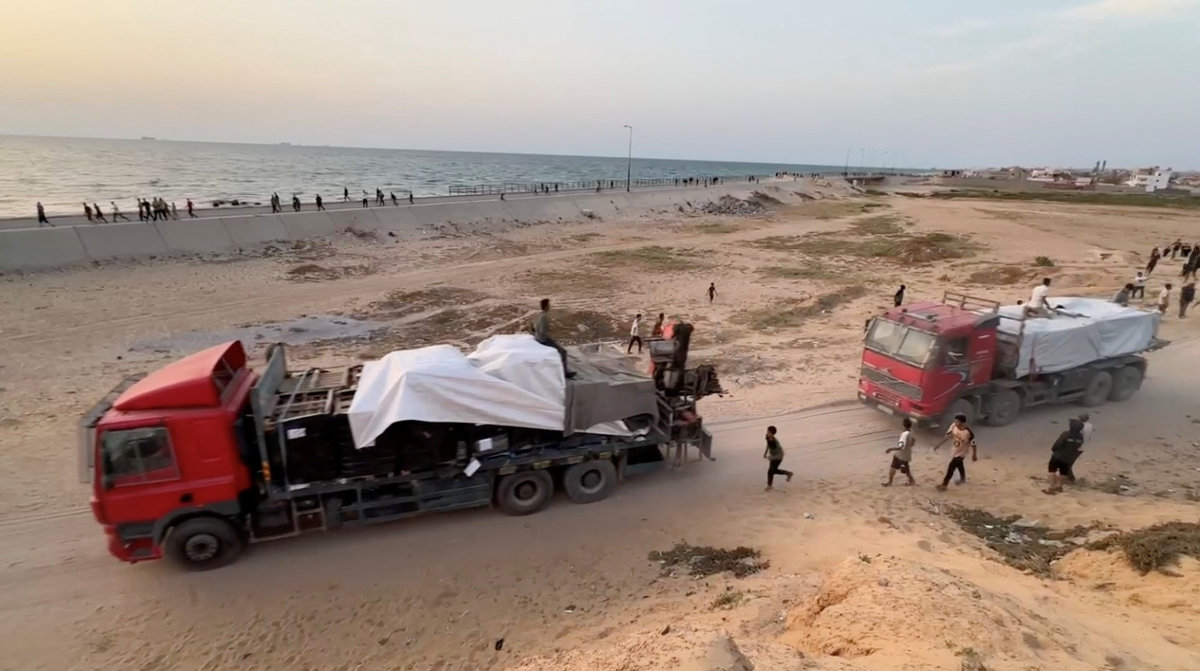TRIPOLI: The United Nations is determined to hold Libya’s national conference on possible elections on time despite eastern forces’ advance on the capital Tripoli in an escalation of the conflict, a senior UN envoy said on Saturday.
G7 foreign ministers warned eastern Libyan military commander Khalifa Haftar to halt his thrust on Tripoli, menacing the internationally recognized government based there, or face possible international action.
Haftar’s Libyan National Army (LNA) said on Friday its forces had advanced into the capital’s southern outskirts and taken its former international airport.
The offensive by the LNA, which is allied to a parallel administration based in the main eastern city of Benghazi, intensifies a power struggle that has fractured the oil-producing country since the 2011 overthrow of Muammar Qaddafi.
The United Nations aims to stage a conference in the southwestern town of Ghadames on April 14-16 to weigh elections as a way out of the country’s prolonged factional anarchy, which has seen militants establish a toehold in some areas.
Ghassan Salame, the UN special envoy to Libya, said he was striving to prevent the new crisis from getting out of control. “We have worked for one year for this national conference, we won’t give up this political work quickly,” he said.
“We know that holding the conference in this difficult time of escalation and fighting is a difficult matter. But we are determined to hold it on time unless compelling circumstances force us not to,” he told reporters in Tripoli.
At a G7 meeting in France, German Foreign Minister Heiko Maas said he and his counterparts had agreed they must exert pressure on those responsible for the upsurge of fighting in Libya, especially Haftar.
Italian Foreign Minister Enzo Moavero Milanesi said the G7 statement “should be seen as an appeal to General Haftar to consider with a sense of responsibility peaceful solutions for stabilizing Libya under the UN umbrella.”
Russia also called for restraint, saying Deputy Foreign Minister Mikhail Bogdanov told Haftar in a phone call that Moscow continues to insist on a political solution to “disputed issues” in Libya.
Haftar told Bogdanov about what he described as efforts to fight terrorists in Libya, including near Tripoli, according to the Russian Foreign Ministry.
The United Nations wants to find agreement on a road map for elections to resolve the protracted instability in Libya, an important oil exporter and transit point for refugees and migrants trekking across the Sahara with the objective of reaching Europe across the Mediterranean Sea to the north.
In Cairo on Saturday, Egyptian Foreign Minister Sameh Shoukry said the crisis could not be settled by military means, though insecurity in Libya had long been a source of worry.
At a news conference alongside Shoukry, Russian Foreign Minister Sergei Lavrov said Moscow wanted all political forces in Libya to strike an agreement in support of peace and warned against foreign meddling there.
There were no reports of significant fighting on Saturday.
Haftar’s LNA said on Saturday its positions were attacked in an air strike south of Tripoli but there were no casualties.
Haftar, 75, was quoted by Al-Arabiya TV as telling Guterres his offensive would continue until terrorism was defeated.
A former officer in Qaddafi’s army, Haftar enjoys the backing of Egypt and the United Arab Emirates, which see him as a bulwark against extremists and have supported him militarily, according to UN reports. The UAE, however, joined Western countries in expressing its deep concern about the fighting.
In the past, Haftar has struck deals with armed factions outside Tripoli to advance his forces. But gaining control of Tripoli — the ultimate prize for Haftar’s eastern parallel government — would be far more complicated.
Armed groups allied to the Tripoli government have moved more machine gun-mounted pickup trucks from Misrata to Tripoli to defend it against Haftar’s forces. The city is known for a spirit of resisting “old regime” figures, developed during 2011 when pro-Qaddafi forces besieged it for three months.
The LNA says it has 85,000 men but this includes soldiers paid by the central government that it hopes to inherit. Its elite force, Saiqa (Lightning), numbers some 3,500, while Haftar’s sons also have well-equipped troops, LNA sources say.
In 2014, he assembled former Qaddafi soldiers and in a three-year battle seized Benghazi. This year, he took control of Libya’s south with its oilfields.
























